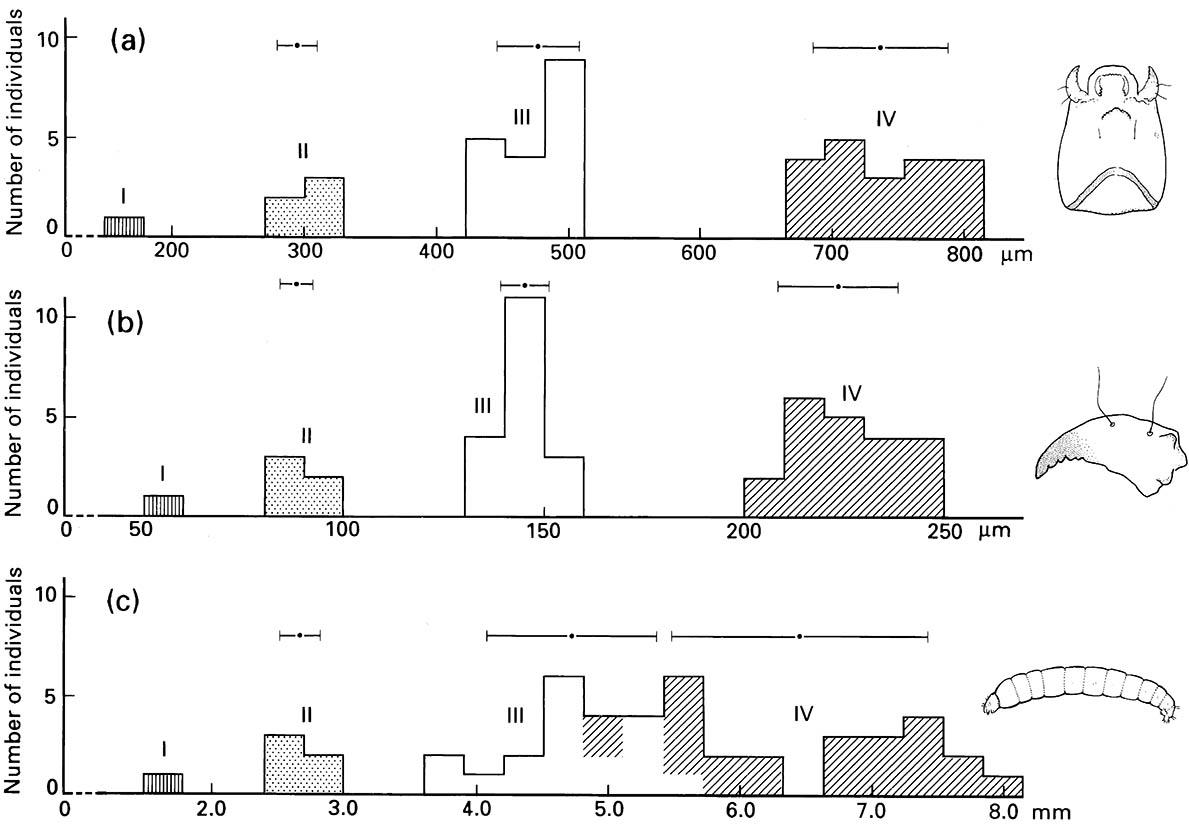Figures 6.11

Figures 6.11. Growth and development in a marine midge, Telmatogeton (Diptera: Chironomidae), showing increases in:
(a) head capsule length; (b) mandible length; and (c) body length between the four larval instars

